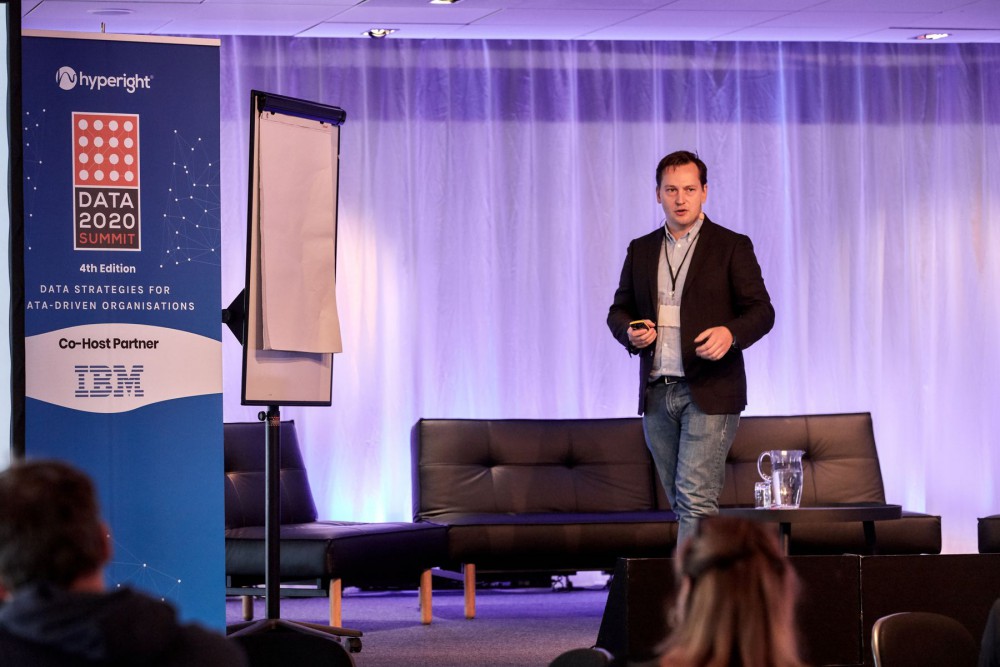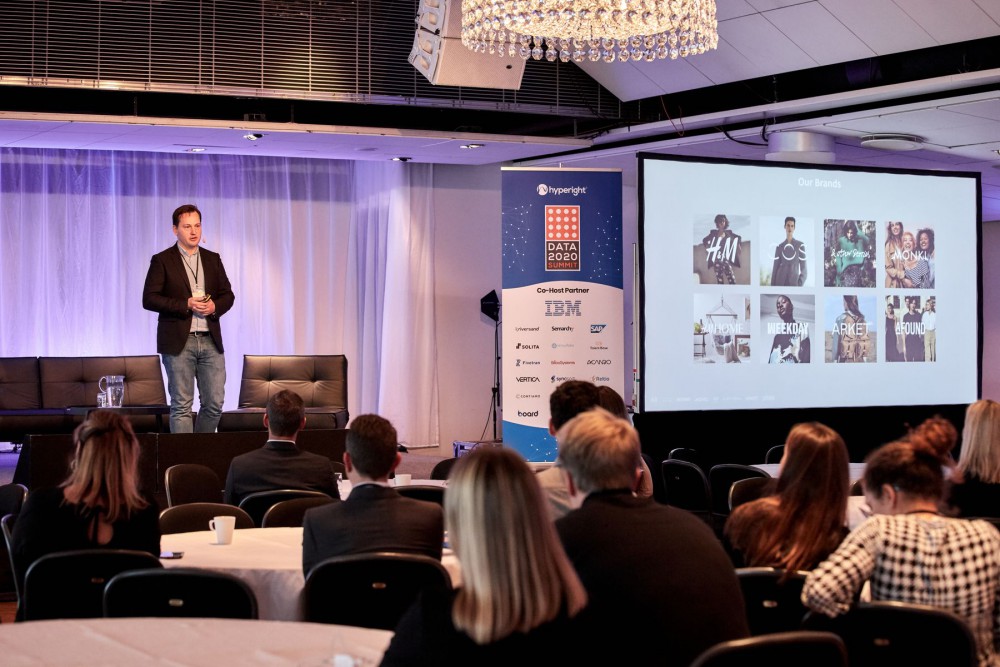We’ve previously talked about the AI-driven retail journey of H&M Group told by Errol Koolmeister, Head of AI Tech & Architecture and Acting Head of Data Science at H&M Group. As it’s clear so far, you need to make sure all your basics with data are taken care of first in order to do the cool stuff with AI and machine learning.
This is why this time we are going to look into H&M Group’s data management journey. Alex Astrogold, H&M Group’s former Data Management Architect portrayed the other side of the global retail brand’s data coin at Data 2020 Summit 2019.
Alex Astrogold’s main focus was how they moved from an IT-driven data organisation towards more business-driven with all the accompanying challenges of managing data, trying to find sponsors, data owners, CDO, etc.
As of today, H&M Group has nearly 5,000 stores in 71 markets worldwide welcoming nearly 5 billion visitors yearly. Considering these figures in the context of the cutthroat competitive retail business, H&M Group is surely in a leading position.


The only constant is change
Operating globally, however, poses a certain challenge for handling data solutions and providing data services for the business, one of the main reasons being is the constant change in the organisation, states Alex. Going from a Nordic to a global brand means having to uphold various regulations of different markets.
All these changes also brought about changes in their business models, stresses Alex. When H&M Group’s information models and solutions had been designed, they only covered selling garments. But since then, they have introduced many exciting new features into their stores, like selling pastries, manicures, repairing garments, etc. All this creative inventiveness and introduction of new features requires flexible and dynamic data solutions, states Alex.
However, implementing disruptive technologies in the key development areas takes time with a corporation of the size like H&M Group. Nevertheless, it’s certainly exciting working with innovative initiatives that help achieve H&M Group’s business vision, declares Alex.
In order to be able to manage all changes, initiatives and ideas in terms of data, H&M Group developed a data strategy and vision.


Data strategy and vision of H&M Group
H&M Group’s data strategy and vision can be summarised in three words which they adhere to: grow, share and care, relates Alex. Each of the keywords refers to activities related to their data. “Grow” refers to the need to grow their assets, better understand their customer to be able to provide better offerings, expand their product descriptions and make automated decisions based on them.
As H&M Group is not a closed ecosystem, they have different customers and import product data from them, so they need to “share” data internally and externally.
And lastly, “care” refers to having proper data governance in place, understanding their assets and their quality.
The journey toward business-driven data governance
Nevertheless, reaching a clear data strategy and vision wasn’t an easy journey and it took some figuring out to get to the current state, claims Alex.
Alex outlined the main milestones in H&M Groups’ data management journey, which included ups and downs, and uphill struggles along the way.
Back in 2012, the Group decided to implement a large ERP system whose aim was to consolidate sales, logistics, finance. The result was better data quality and automated processes. But it also brought in some disadvantages such as limited business involvement into how the solution should be designed. Also, the changes that had been happening in the organisation affected the data quality which at instances made processes stop.
In 2014, they took actions to establish an operational organisation or master data management. It entailed taking some of the processes from project into operational mode. They started supporting business and offering services with data maintenance. Data quality issues were assessed from a root cause perspective and they started being more accepting and prepared for the constant change.


Alex recounts that it became clear though that some of the issues may be originating outside the ERP system and caused by the data producers. This consideration introduced the idea about architecture function whose purpose was to safeguard enterprise data design and solutions and assist with selecting the right technology to tackle data challenges. But there were still dealing with department silos that undermined the overall data strategy.
The solution was to have a clear strategy for master data management and transparent data quality principles. Also, collaboration with the business was established on a strategic level H&M Group started considering data governance in the long run. Data quality platform was also introduced that transformed into a bespoke organisation that started gaining traction with solving data quality problems and adding value to the business needs. However, business ownership wasn’t there, the number of data assets that they had was still managed by the IT organisation.
They started working more closely with business development, analytics and other relevant departments for establishing the data management steering group. This group worked towards addressing the issue with not having a proper data strategy in place and defining strategic projects. At this stage, the path was paved for H&M Group to be able to develop its data strategy.
One important aspect Alex emphasises when it comes to establishing successful business-driven data governance is talking to stakeholders from the right level.


Already in early 2019 H&M Group started implementing the data strategy and formed the data strategy office that would assist with it and support all data initiatives. The data strategy initiative consisted of 3 layers which Alex explains in detail:
1) Strategic level, working with awareness. Rising awareness for the importance of data management is also of crucial importance. C-level leaders and people working with the systems understand why data is important, but people in the middle must be also made aware of its importance and why growing, sharing and caring for data is important.
2) Focusing on the strategic initiatives – H&M Group made sure they have scalable and established data quality platform. They worked on establishing a future-proof stable MDM solution, including tools, methodology and processes needed to support the business.
3) Establishing a data governance framework and roadmap – Future steps on how the data organisation function, MDM function and architecture function should work together.


Lessons from the data management journey of H&M Group
Alex summarised the main takeaways from his presentation:
- Start small and simple – Although the enthusiasm and ambitions are overwhelming at the start of the initiative, they need to be broken down into smaller bits and implement them one by one.
- Create value for the business – There are a lot of initiatives starting simultaneously in an organisation, so it’s important for business the understand the ROI from the data initiative, instead of telling them what to do.
- Work closely with the data sponsors – Data sponsors can back the data management projects if they hit closed doors.
- Timing is everything – As Alex explains, the reason why H&M Group started their data strategy was the trend with AI and the possibilities. We should be aware of the business needs and what is the best timing to start with the initiatives that are relevant.














Add comment